Catchy Chorus
Lesson 1.
Lesson Objective:
In today’s lesson, we’re going to learn interesting ways to breathe and stand tall while singing. Plus, we’ll pick a song as a group and share the singing duties. Get ready to have some singing fun! 🎵
Warm-up Exercises:
- Vocal Stretching and Body Awakening
- Stand up straight. Imagine lengthening your body through each vertebrae in your spine. Pretend your spine and head are being pulled up toward the sky. Point your tailbone towards the ground and the crown of your head towards the sky. As you point your tailbone down you will need to align your body by shifting your pelvis slightly forward.
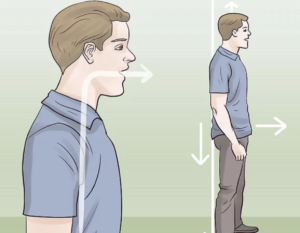
- Relax your body. As you lengthen your body, don’t forget to relax and stay loose. It is not uncommon for your body to naturally tense up as you stand up straight. Relaxing your body will allow your diaphragm to expand and enable you to take a deeper breath.
- Keep your chin parallel to the ground. Your ears should be over your shoulders and the crown of your head should be pointed at the ceiling. This position will allow the maximum amount of air to flow in and out of your abdomen.
- Rotate your shoulders to the back and down. In a circle, rotate your shoulders forward, up, and then back. Keep your shoulders in the back position. Relax them so that they are slanted down.

- Hold your chest high. When your shoulders are slightly back, you will find that your chest naturally rises. Holding your chest high will create more room for your diaphragm to expand. Do not strain or puff out your chest.
- Tighten and relax your core. When you are breathing in, your core should be relaxed in order to expand to accommodate the air that you are taking into your body. Your core will tighten as you slowly release this air to project your voice.
- Place your arms by your sides. Your arms should be to each side of your body. Keep them relaxed and not rigid. Your hands should be slightly away from your body. Remember to also relax your hands and your fingers.
- Avoid locking your knees. Relax your knees and legs. Bend your knees slightly to help remind you not to lock your knees. Locking your knees can interfere with circulation, causing you to become dizzy or lightheaded
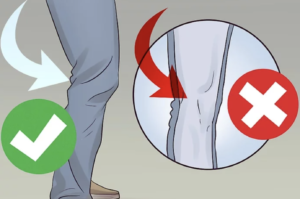
- Stand with your feet shoulder width apart. You will want to stand with your feet apart but not too far apart. Aim to keep your feet under your shoulders. You can also put one foot slightly in front of the other foot in order to keep your balance
Test your new singing posture on Quizlet.com Then, try singing again in a slouched posture. You should notice that you are able to project your voice much better when your body is in a good singing posture. Don’t worry if it feels foreign or uncomfortable. You will get used to this new posture with time.
Activity 1: Winter Songs Repertoire
– Listen to a selection of winter songs, in your group choose a specific song :
Collaboration Task:
Each group to discuss the shared responsibilities within the group. Group leaders write down the names of your members of the group and their roles.
Plenary:
- Why is it important to breathe the right way when we sing?
- How does our special breathing called diaphragmatic breathing help us sing better?
- How does standing or sitting up straight and in the right position help us sing our best?
- Why is it helpful to have good posture when we’re trying to control our breath while singing?
Homework:
Complete Quizlet flashcards: LINK
Lesson 2
Lesson Objective:
To learn about the structure of the song and be able to divide your group song into sections for practice.
Introduction
– What is your favorite song and what you enjoy most about it?
– Each of this songs have a special Verse/Chorus structure
Activity 1: Listening and Identifying Sections
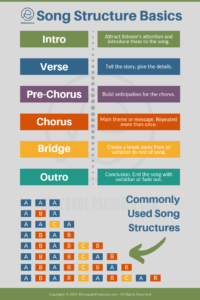
https://fosuk.server1.apps.focusonsound.com/dictionary/all/Popular_song#Popular_song
Activity 2: Group practice
Set up Seesaw and ask students to upload their videos every lesson.
Group Practice
– Each group to practice verse 1 only, focusing on utilizing the proper breathing technique, posture, and alignment.
– Upload your video on Seesaw.
Plenary:
- What important parts did you find in the song structure, and how do they make the music sound good?
- Why is it helpful to split the group song into different parts when practicing, and how does it make the song better?
- How can changes in the way a song is put together affect how it makes you feel, and can you point out examples from the song we looked at?
Homework: Quizlet Flashcards : LINK
Lesson 3
Lesson Objective:
Learn about Intervals in Music
Warm up song:
LINK to the lesson
Activity 1:
Intervals identification: LINK
Set up the settings first:
- Choose only Treble clef.
- Adjust the range from C to top F
- Click on intervals and chose 3 rd column intervals only
- Click on difficulty level 1
Plenary:
What is an interval?
How do we count them?
Name 2 different types of intervals
Lesson 4
Lesson objective: Understanding Melodic Motion
What is a Melody?
Melody is a sequence of musical notes played at a certain rhythm within the context of a song. Melodies are characterized by the elements such as pitch, melodic motion, dynamics, and rhythm as showcased below. Some may use melodic motion, or the way in which notes of a melody move in relation to each other, to describe the biggest difference between one melody over another.
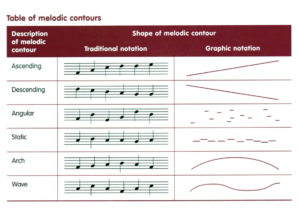
Conjunct Motion
Conjunct motion essentially describes a melody that’s written in a way where the phrase rises and lowers in a stepwise fashion, without significant skips. You can hear this gentle rise and fall in Beethoven’s Ode to Joy :
Disjunct Motion
Disjunct motion describes music that rises and falls in a more unpredictable fashion, using significant skips unlike conjunct motion. You can hear this in Chinese National Anthem like where one pitch rapidly shifts to another:
Ascending Melody
As the name suggests, an ascending melody is a line of notes that rises in pitch over time. You can hear a good melody with ascension in Richard Strauss’s Don Juan :
Descending Melody
A descending melody is the opposite from ascending melody, where each note progressively deYou can hear the descending harmonic minor scale in Fly Me To The Moon:
Jump and Skip Melody
A jump and skip melody is probably the most common sort of melodic style you’ll encounter while making music. Instead of moving in a predictable interval upwards or downwards as shown in an ascending or descending melody, these melodies will move from one direction to the other in the same song. You can hear this at work in Yesterday by The Beatles. The melody ascends, before descending:
Rhythmic Melodies
These types of melodies aren’t as concerned with various pitches and rely more heavily on groove or rhythm to keep the listener’s interest. While the pitches in the main chorus melody aren’t overly complex, the cadence of the delivery keeps it interesting:
Arppegiated Melody
This melody is an arpeggio of the backing chord progression, pronouncing the first, third, and fifth scale degrees. We can hear this in the classic song Got To Get You Into My Life , in this case performed by Earth, Wind, and Fire:
Call and Response
This type of melody has one melodic phrase, responding to another, often referred to as a counter melody. Hear this melody in Oh Ah lele song :
Activity 1:
Revise the melody shapes on Quizlet flashcards
Activity 2:
Identify different shapes of the melody in Jingle bell rock song:
Lesson 5
Vocal Resonance and Tone Quality
Objective: Exploring the Ranges of different types of voices.
Warm up song:
How high or low is your voice?
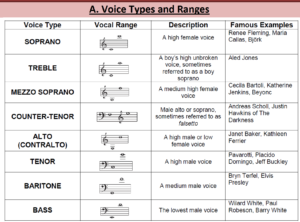
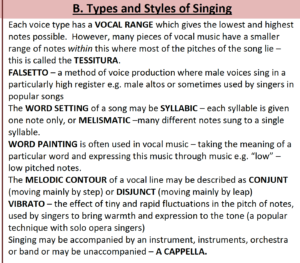
Listen to Soprano Voice:
Treble Voice:
Mezzo Soprano:
Alto:
Lesson 6
Lesson Objective: By the end of this lesson, you will become a voice detective and learn to recognize different types of voices in songs. Get ready to discover the amazing variety of sounds that voices can make!
Activity 1: Listen to six extracts for SOLO VOICES AND ACCOMPANIMENT. As you listen to each extract, see if you can identify what TYPE of voice is singing, choosing from the list below and using each given voice type once.
Warm up song: (start from 1. 46 min)
Let`s sing together a new Winter song today:
Lesson 7
Lesson Objective:
To learn about Diction and Articulation in Singing
To be able to identify Syllabic and Melismatic Singing
Stater activity:
Sing the following Tongue Twisters:
| Term | Definition |
|---|---|
| Articulation | How you play or sing individual notes. It’s like the “accent” or “shape” of each sound, whether it’s short and crisp or smoothly connected to the next note. Think of it as the way you pronounce musical notes. |
| Diction | How clearly you sing or speak the lyrics. It’s about making sure every word is easy to understand. In music, it’s like pronouncing each lyric with precision, so the audience can catch every word and emotion you’re expressing. |
Task 1:
Discuss the following questions with your partner:
1. Why is it important for musicians to play or sing each note in a way that stands out, whether it’s short and snappy or smoothly connected? How does this affect the feeling of the music?
2. How does speaking or singing the words of a song clearly (good diction) make a performance more enjoyable for people listening? Can you think of a song where you struggled to understand the words?
3. Imagine you’re playing a musical instrument or singing in a choir. How might the way you play or sing change based on the style of music you’re performing? Can you give examples?
4. Have you ever heard a song where the singer didn’t pronounce the words clearly, and it was hard to understand what they were saying? How did it make you feel as a listener?
5. If you were teaching a friend how to play an instrument or sing a song, what advice would you give them about making sure each note or word is heard clearly? Why do you think this advice is important?
Syllabic and Melismatic singing
Syllabic– Singing where each syllable of the lyrics corresponds to one musical note. It’s like matching each word with a single note, making the melody follow the natural rhythm of the lyrics.
Melismatic– Singing where a single syllable is extended over several different notes. It’s like stretching out a word, creating a decorative and expressive effect by moving between different pitches within that one syllable.
Listen to the example:
Identify the sections with Melismatic and Syllabic singing:
Lesson 8
LO: Singing Textures – Singing Four-Part Rounds
Starter: Warm up Exercise

Texture:
Homophonic
Polyphonic
Lesson 9
LO: Singing with Expression
Starter:
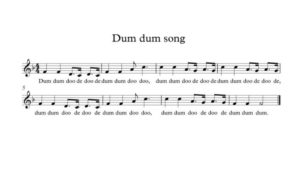
Using expression in music

Many songs have meaning or tell stories. Sometimes they make us feel happy, energetic or sad.
A singer has to perform a song in a way that helps the listener understand the feeling and emotion of the song.
To do this they use .
How does this song make you feel?
As a singer, this is a good question to ask ourselves before we perform.
Can you think of song that makes you feel lively?
Or a song that makes you feel calm?
Changing not only the way we sing, but in music can change the feel and emotion of a song. Let’s find out more!
Watch: Feel and emotion featuring Nina Simone
How do we add expression?

Have you ever noticed, if you’re reading a story, you might often change your voice to match the character or feeling in the story?
Sometimes at the scary parts, we get quieter. Or in the exciting bits, make the words really choppy.
We can do this in singing, to add expression to a song. The two important ways to do this are with:
What is diction?
Diction is how we pronounce the words or say the letters in the lyrics to a song.
This helps our audience hear what we are singing about, so they can follow the story or message in our performance.
It’s especially important in a choir. If people sing at different times, with incorrect diction, it can sound messy.
Watch: Singing with diction
What are dynamics?
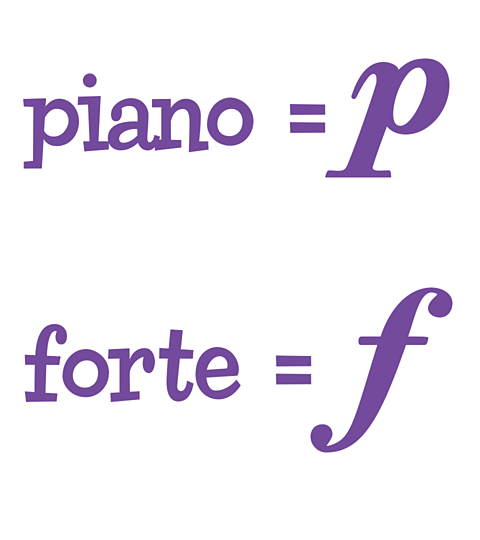
When we sing, being able to adjust the volume or dynamics of our voice, makes our performance even better.
In music, Italian terms are written to show the dynamics (volume) we need to sing with.
The two most common are:
- Piano – which means quiet and is written as ‘p’.
- Forte – which means loud and is written as ‘f’.
Activities
Singing with dynamics challenge

Pick a song you know well and start singing this as loudly as you can, without shouting.
Now as you sing, get quieter on each line until you are at a whisper.
Try singing again, only this time start quiet and get louder. But remember not to shout.
Is it easier to sing loudly or quietly?
The bathroom or shower is a great place to practice this!
Complete the Quiz:
https://www.bbc.co.uk/bitesize/topics/z4nsg2p/articles/z68g8p3#zwgsg2p
Lesson 10
Listen to ‘Let`s dance’ song. Listen to the combination of 3 chords, which the musicians used to write a song:
What is the style of the song?
LO: Exploring chord patterns in songs and learning to play them on the keyboard.
Activity 1:
Listening:
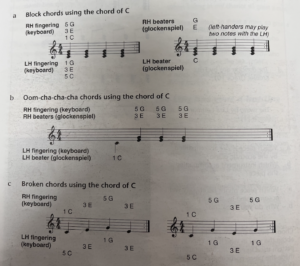
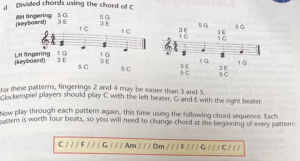
LO: WRITING a SONG
Starter:
- Which chords they used to write a song?
- How did they make up a melody?
Activity 1:
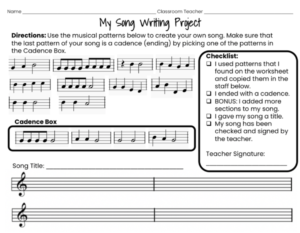
LO: Finding matching chords for your melody
Questions to answer:
Identify which chords are played in which order?
How does the chord arrangement change each time?
Activity 1:
- Play chords C, F, G, and A minor on the piano.
2. Discuss with your partner which chords you think would best match your melody.
3. Write down the chords under your melody.
4. Play your melody with the chords.
Extension task:
Write lyrics to match your melody. Create a song about Chinese New Year holidays.
Assessment Criteria:
| Assessment Criteria | Proficiency Level |
|---|---|
| Finding Matching Chords | |
| The student successfully found matching chords for each part of the melody. | Proficiently |
| The student struggled to find matching chords for each part of the melody. | Inconsistently |
| The student found some matching chords, but there were inconsistencies. | Adequately |
| The student couldn’t find matching chords for the melody. | Unsuccessful |
| Playing the Melody with Chords | |
| The student played the chords and the melody well | Competently |
| The student had difficulty playing the melody with the chords | Inconsistently |
| The student managed to play the melody with chords, but there were some mistakes or hesitations. | Moderately |
| The student didn’t try to play the melody with chords. | Did Not Attempt |
| Writing Lyrics | |
